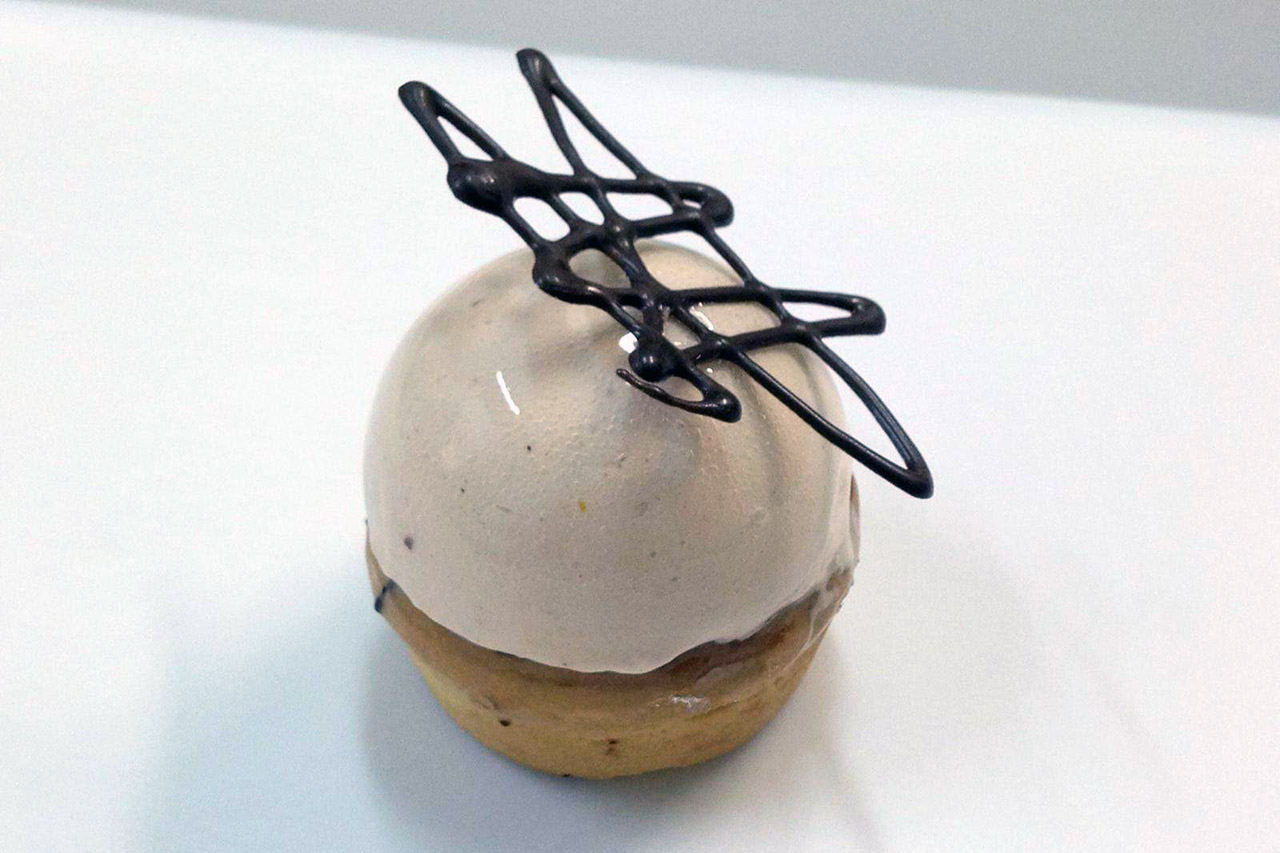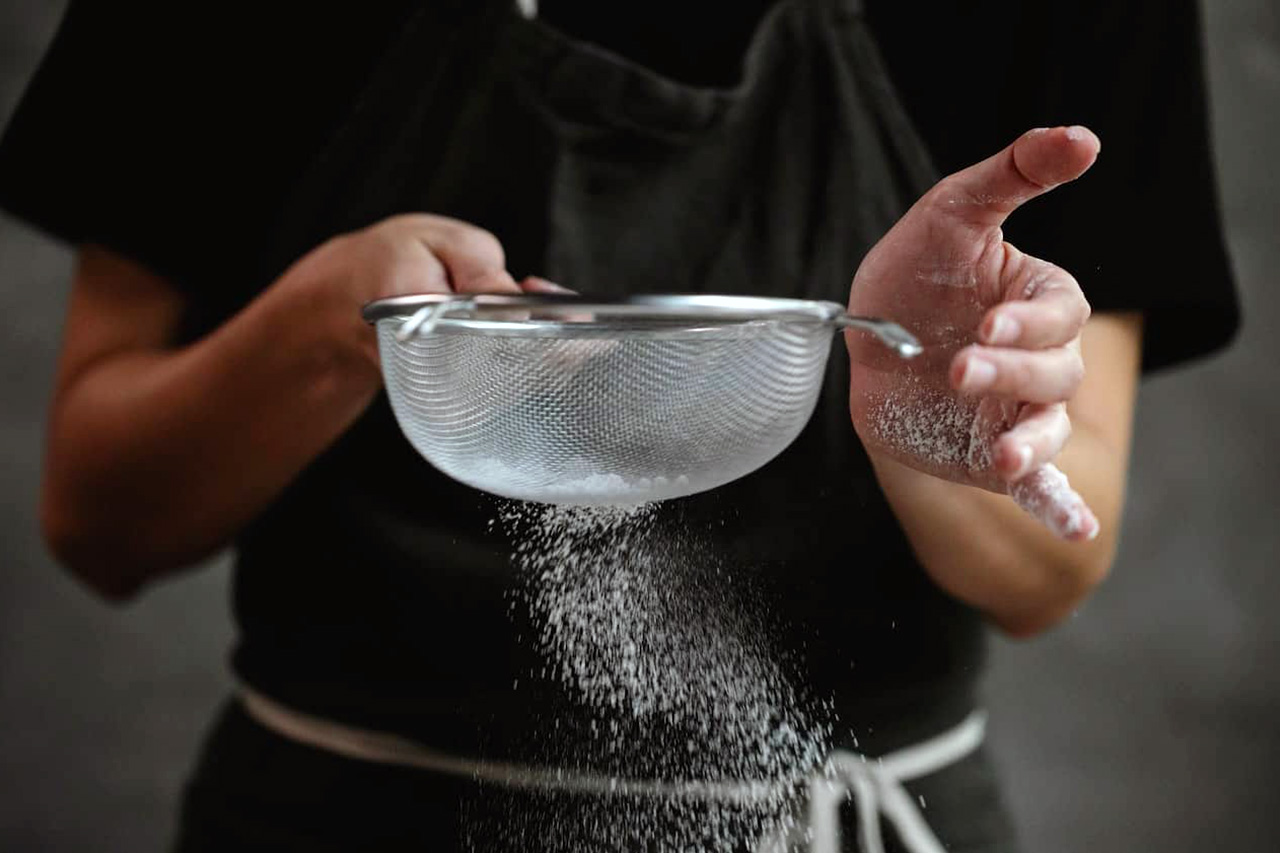A new generation of chefs, restaurateurs, and pastry chefs is rewriting the culinary history of the Amalfi Coast’s green lung with innovation and creativity.
June 2th, 2023. By Anna Volpicelli, photo by Klaus Nielsen
They tell their territory through local products and create recipes with King Fiascone, fior di latte, ricotta, lemon, and Concerto liqueur.
The history and culture of the Amalfi Coast, particularly Tramonti, are told on the plate. With this philosophy and mission, young chefs, restaurateurs, and pastry chefs carry on their native culinary tradition, innovating it creatively but constantly remaining faithful to each ingredient’s simple and authentic flavors.

Mario Cavaliere – discovering the land through food
He spent his childhood in Pasticceria Angelo, watching his father, Angelo Cavaliere, owner, create and produce sweets in the workshop. “When my schoolmates went to the seaside, I would spend my days in the pastry shop helping out and watching my father do his work,” Mario Cavaliere, 28, tells us.
After graduating from hotel management school in Maiori, he traveled both abroad, to Saint Moritz in Switzerland, and then back to the Amalfi Coast and worked at two hotels in Ravello, Villa Maria, and at the Caruso, a Belmond Hotel with one goal: to challenge himself, hone his technique and learn as much as possible to improve. “After these experiences, I joined my father in pastry making, bringing everything I had learned over the years with creativity and innovation. I started experimenting and making new recipes with local products, especially those from Tramonti, including Concerto liqueur.”
From classic delights to pasticciotti with concerto cream to semifreddo that also features the liqueur as an ingredient, Sicilian cannoli, from the classic version to one with ricotta and lemon, to one with pistachio, to genuine innovations. One is the baba delight, a dessert combining the Neapolitan tradition with the Amalfi Coast.
“I am passionate about this craft because it leaves much room for creativity and imagination. There are endless possibilities to know and discover the territory through studying and researching local products. In Tramonti, for example, my peers have companies that produce honey, which is different from the others because it is much more citrusy and goes perfectly with pastries,” he says.
In addition to pastries, Mario, along with his father Angelo, also prepares savory dishes displayed and sold in the pastry shop in Tramonti, the B&B san Giacomo Relais in Furore, and the delicatessen in Amalfi. “Here, too, we do work focused on enhancing the territory. We create dishes and sandwiches that enhance local specialties. We use Re Fiascone, ricotta and fior di latte from Tramonti. We prepare the bases in the workshop and finish them in the restaurant and the deli,” he explains. It’s a continuous effort from seven in the morning until midnight. “We spend the first part of the day preparing breakfasts. Then we bring the food to the bed and breakfast restaurant and the deli. I spend a lot of time between Tramonti, Furore, and Amalfi. Of course, it’s challenging, but my goal is to expand while remaining authentic.”

Imma Esposito – Attention and curiosity
For the past few years, Imma Esposito, 34, and her brother Giovanni, 23, have been running the family restaurant Le Querce. “My father and his friends opened it in 2000. Initially, it was a riding stable with a picnic area and a bar. Over time, however, they noticed that the bar business was making a lot of money, so they decided to turn the entire property into a restaurant. After a while, friends took other paths, and my father then decided to leave the business to us,” Imma says.
The restaurant is a braceria (steakhouse) that specializes in meat dishes. “We serve everything we produce. My brother has a farm where he raises sheep, goats, cattle, and pigs and grows vegetables of various kinds. In the restaurant, he takes care of the main courses. I take care of the appetizers, entrees, and desserts, as well as the dining room and customers,” he explains.
They cook the meat cooked over charcoal coals. Guests choose the type of meat they want. Giovanni cuts it using ancient methods “with a hatchet as it is done in a butcher shop.” The cuts and cooking vary depending on the type of meat chosen. “Our steaks, for example, all weigh about 1kg to 1kg and a half and are therefore tall, for those who prefer more cooked meats must opt for another type. All are seasoned with salt and lemon. We don’t like adding other flavors because the product is good, so it doesn’t need anything else.”
The kitchen, on the other hand, is wholly run by Imma. “I create the first dishes and then show them to the cooks who work with us. I did not study to become a chef but learned by watching my mother and grandmother. I’ve always had a good eye, and this then served me to transfer everything into the recipes that are prepared.”
Every day, in addition to the dishes on the menu, a new one is offered, including pasta and potatoes with lard on Tuesdays, bucatini with goat chop on Thursdays, stockfish on Fridays, and farro with beans on Saturdays. “These recipes belong to a tradition, but they continue to please. And every ingredient present comes from what we grow.” A farm-to-fork formula that has won over all palates, from local to international.
“Desserts, on the other hand, I only make from the classic tiramisu to the galette pizza, which is “grandma’s” simple but tasty dessert that customers specifically request. They want to ensure this dessert is there when they call me for a reservation. I prepare it with cookies, which are soaked in coffee and added chantilly cream and chocolate cream.” Of course, there is no shortage of traditional local ones, including lemon delight and parfaits made with Concerto liqueur. “We make it ourselves. It looks more like a cream than a liqueur because it is more consistent but goes well with spooned desserts. I make it a semifreddo with ricotta, Concerto, caramelized walnuts, and crumble.”
Imma designs the wine, which consists mainly of red wines. “There is a large section of local wineries, from Tramonti, which is one of the best areas for red wine, and then some labels from other Italian regions, including Primitivo, Chianti, Montepulciano.”

